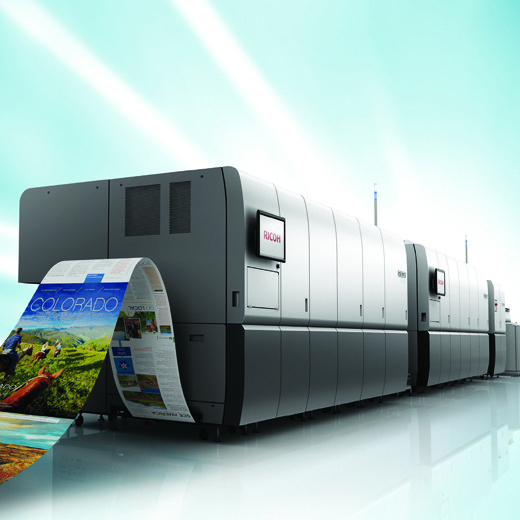
Ricoh Asia Pacific is announcing another step in its journey to be the most innovative inkjet printing company in the world. ...
March 01 2018
Ricoh Asia Pacific is announcing another step in its journey to be the most innovative inkjet printing company in the world. Knowing that production printing businesses are continuing to ask more from digital print vendors, especially for inkjet solutions, Ricoh today announces the development of a new ink technology. This new ink will soon be brought to market as an additional option to current and future clients on the Ricoh Pro™ VC60000 continuous feed inkjet printing platform.
The direction Ricoh is taking with the new ink technology contributes to improving the wide-ranging capabilities of what is already an industry-leading production inkjet portfolio. Clients will benefit immediately and in the future because of Ricoh’s decades of experience in tuning print head technology, waveforms and ink chemistry. By using these new inks, clients will immediately see key advantages:
“Our clients have been very successful levering Ricoh’s production inkjet solutions in their businesses. They have also continued to partner with us in developing new technology that will enhance the solutions they have invested in, and offer them clear growth paths for the future,” said Eef de Ridder, Director, Commercial Printing of the Commercial & Industrial Printing Group, Ricoh Europe.
“The future of Ricoh’s business, and that of our clients’, is entwined in a shared opportunity to understand market requirements and the solutions required for business growth. Ricoh’s new inks are an excellent example of innovation addressing real world business opportunities through improved colour, faster production speeds, and enabling the use of common paper types in the commercial print space.”
For details on Ricoh’s full line of products, services and solutions for the production print market, please visit:
www.ricoh-ap.com

SCREEN Graphic Solutions Co., Ltd. has been honoured with a 2018 technology award by the Japanese Society of Printing Science and Technology (JSPST). The prize has gone to Screen’s...
March 01 2018
SCREEN Graphic Solutions Co., Ltd. has been honoured with a 2018 technology award by the Japanese Society of Printing Science and Technology (JSPST).
The prize has gone to Screen’s Truepress Jet520HD, a digital inkjet press that has become its flagship high-speed web model and, when running Screen’s new SC inks, can print directly on standard offset coated papers, without the need for any pre-treatment.
“This is a great recognition of Screen’s determination to bring high volume digital inkjet up to offset standards,” says Screen GP Austria managing director Peter Scott. “It comes six months after the 520HD and SC inks received the InterTech™ Technology Award presented by Printing Industries of America, at the Print 17 trade show in Chicago last September. The ability to print on offset coated stocks using inkjet brings down the barriers that have prevented quality offset printers from fully embracing digital. Paper costs have also reduced since standard offset stocks cost less than specially coated inkjet media, or pre-treating of offset papers.”
The JSPST presents the awards in February each year to recognise technologies that have made an outstanding contribution to the growth of the printing industry or to the development of applications for other fields. In making its selection, the JSPST considers points including the level of innovation, progress, marketability and expandability shown by each technology.
The Truepress Jet520HD is equipped with 1,200 dpi high-resolution inkjet printheads that effectively deliver the rich color gamut, texture, detail, vibrancy and depth required for high-quality publishing and commercial printing. The press enables the achievement of superior image quality approaching offset printing at industry leading speeds.
The specially developed SC inks enable the Truepress Jet520HD to print directly onto offset coated paper without any pretreatment or primer processing.This ability preserves the texture of surfaces while cutting lead times and costs. Thanks to these innovations, both products have been rapidly adopted by companies around the world for use in the publishing, commercial printing and direct mail markets.
Screen has previously won three JSPST technology awards; for its TaigaSPACE integrated prepress system, the PlateRite 8000 and 8600 thermal CtP recorders and original Truepress Jet520 high-speed roll-fed inkjet press.
Tsuneo Baba, President of SCREEN Graphic Solutions Co., Ltd., on being presented with the JSPST award commented: “ SCREEN is delighted to have been honored by the JSPST with one of its prestigious technology awards.
Until recently, specialized inkjet paper was the only choice available when using inkjet presses. However, we listened to calls from the market to be able to print directly onto standard offset coated paper and subsequently developed our award winning Truepress Jet520HD and SC inks.
Together these products deliver significantly improved cost efficiency and image quality that opens up a wide range of new applications in areas ranging from personalized direct mail to publishing and standard commercial printing. Our technical capabilities have allowed us to develop unrivaled propriety technologies and we are extremely grateful for this recognition of their advanced functionality and viability.
We plan to continue our work to create new business models that closely target the needs of our customers. It is our hope that the next-generation technologies developed as part of these efforts will make a major contribution to the ongoing expansion of the global printing industry.”

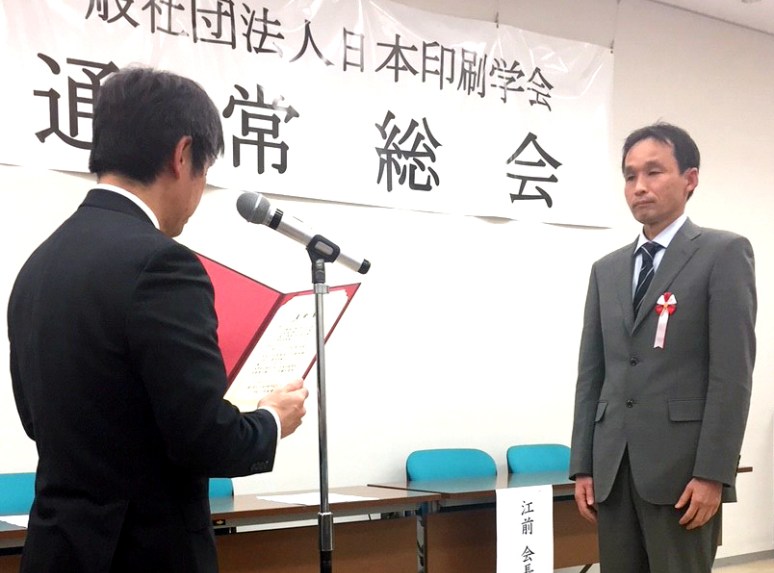
Konica Minolta has today revealed important market updates for its AccurioJet KM-1 inkjet digital press, which was commercially launched at drupa in 2016. More than 30 worldwide...
February 18 2018
Konica Minolta has today revealed important market updates for its AccurioJet KM-1 inkjet digital press, which was commercially launched at drupa in 2016. More than 30 worldwide installations have been achieved, including new ones in Europe for January and February this year.
The first installation in Poland has gone live this month [January] and an announcement on a significant agreement in France is due to be made in early February. New business partnerships and branding for patented technology have also been announced as Konica Minolta continues to expand and grow market share in industrial and commercial print markets.
Dot Freeze Technology is the new name for a special process for Konica Minolta’s AccurioJet KM-1 B2 press where the ability to “freeze” the inkjet dot enables perfect registration of colours and image stability. Customers confirm a delta E colour shift of no more than 1.5, which happens to be a major advantage for new customers to invest in this platform.
Other major plans for the Konica Minolta AccurioJet KM-1 include a fully automated inline finishing solution in partnership with Rollem International. The UK based company will be providing the bridge that enables customers wanting to automate their print processes and connect with other third-party finishing devices.
These include US-based Harris and Bruno International, provider of high performance printing and coating equipment, which has become a chosen approved partner to overcoat KM-1 prints.
Five other companies have also been unveiled as official partners working with Konica Minolta on the development of its AccurioJet KM-1 system. They are:
We are progressing significantly and meeting our sales objectives with having reached more than 30 installations worldwide. Feedback from customers using our technology has not only proved that the Konica Minolta AccurioJet KM-1 can sustain high quality and reliability, but is also providing customers with a unique platform to grow their business.”
This B2 digital press is becoming the Swiss Army knife of the printing world because it has so many uses. It is providing our customers with the tool helping to unlock new applications, some of which probably required many different techniques to produce in the past.
Our customers never cease to amaze us with the innovative applications they develop with our technology driven by imagination to deliver more.”
Mark Hinder, Head of Market Development, Konica Minolta Business Solutions Europe
Durst, a manufacturer of advanced digital printing and production technologies, has launched a new printing platform – the P5 series. The first member of the family is the large format pri...
February 15 2018
Durst, a manufacturer of advanced digital printing and production technologies, has launched a new printing platform – the P5 series. The first member of the family is the large format printing flagship, P5 250 HS, with shipping starting from April.
The P5 250 HS is targeted towards high volume industrial production, as well as one-offs in offset quality. P5 relates to five core features at the heart of this technology: productivity, reliability, workflow, versatility and print quality.
The P5 technology consists of a series of new generation printers along with newly, in-house developed software and workflow solutions. The family also has state of the art, touch operation based userinterfaces and leading-edge remote service capabilities. Everything is aimed and streamlined to maximize performance and uptime of the printing family, along with unparalleled flexibility in media and job handling.
Durst’s iconic industrial design, which was originally developed by the famous Ottl Eicher, has gone a further step with the P5. A design studio from Munich canvassed opinions from many customers and operators with a view to integrating their wishes into a new concept. This has been achieved for the P5 – and feedback will be incorporated into many Durst product lines in the future.
When compared to the industry benchmark – Durst P10 250 HS – the new P5 is 70% more productive. Featuring latest MEMS nozzle plates powered by Durst proprietary data-path and electronics, the result is a high-speed printing system with ultra precise drop placement and industrial level reliability.
Durst P5 technology features:
• Print volume capability in two-pass mode up to 240 sqm/h and high resolution modes of 1200 dpi
• Offset printing quality with a drop-size of 5 pcl
• Durst Analytics information platform for pre-emptive maintenance and detailed machine and consumption data to guarantee maximum uptime
• Durst Workflow, which provides an in-house developed suite of applications custom tailored for Durst printers and with unique features – beyond ripping.
Durst Phototechnik AG 2
Christoph Gamper, Chief Executive of Durst Group, said: “The new P5 platform, including workflow software and advanced service tools, represents our key strategy to further invest into large format printing technology and further afield. We believe that there is a lot to explore in this market space and the P5 250 HS is our first statement. In an integrated world, printers need to change as well. With the P5 family we provide tools for change and profit – and our firm commitment to continue to lead the innovation in the large format market.”
The Heidelberg subscription model follows the growing pay-per-use trend in mechanical engineering and aims to move away from growth based solely on selling and installing printing capacity. ...
February 07 2018
The Heidelberg subscription model follows the growing pay-per-use trend in mechanical engineering and aims to move away from growth based solely on selling and installing printing capacity.
Under this Heidelberg model, customers only pay for the number of sheets actually printed. Under the conventional business model, they buy the presses and pay separately for consumables or services. With the new digital business model, all the equipment, all consumables required – such as printing plates, inks, coatings, washup solutions, and blankets – and a comprehensive range of services geared to availability are included in the price per sheet to be charged. This differs significantly from the click charge model already introduced by digital press suppliers. Although these suppliers also charge per sheet, they mainly base this on their own costs and not on the customer’s business model.
“Under the Heidelberg subscription model, the economic responsibility for optimum technical availability, increased productivity, and maximum utilization of the installed equipment no longer rests solely with the customer, but for the first time also with the supplier,” explains Professor Ulrich Hermann, member of the Management Board and Chief Digital Officer at Heidelberg. “After all, a customer only enters into a long-term agreement with us if the benefits are permanent. We ensure this will be the case with our operator model. A situation in which customers are looking to make full use of the opportunities of digitization throughout the system also represents a forward-looking solution,” he adds.
Canon Australia has entered a new relationship with Plockmatic Group to bring new solutions to its Australian Production Print customers Canon Australi...
January 31 2018
Canon Australia has entered a new relationship with Plockmatic Group to bring new solutions to its Australian Production Print customers
Canon Australia is broadening its range of inline finishing solutions for Production Print through a new reseller relationship with Plockmatic Group. Through this new collaboration, Canon Australia can now further support its Production Print customers with a wider range of high quality, fully-finished products.
The relationship covers two Plockmatic devices – the BLM 50 and BLM 35 Production Booklet Makers – allowing Canon customers to now produce stapled or square-fold booklets of up to 200 and 140 pages, at rated engine speeds. Both models can handle coated, uncoated and textured stocks up to 350 gsm.
The Plockmatic BLM50 200 page (50 sheet) booklet maker features numerous performance and durability enhancements, including a number of patented technologies. The Plockmatic BLM35 is a cost effective 140 page (35 sheet) booklet maker that is built on the same engineering platform as the 50 Sheet platform, but offered at a highly competitive price point.
Plockmatic Binder converts a conventional saddle stitched booklet into a flat square spine booklet with a look similar to that of a perfect bound book. With a high level of automation, this printer delivers quality books with minimal effort needed from its operator. The system is engineered to support an average volume of up to 30,000 booklets/manuals per month. Plockmatic offers customers versatility and can be easily upgrade the BLM35 to BLM 50 anytime, onsite. The Manual Feed function allows output from another printer to be finished on the inline Plockmatic BLM50/35, even if the printer is running other jobs to the stacker.
These Plockmatic solutions complement Canon’s existing range of own and third-party finishing options, which include perfect binding, punching, folding, ring binding, booklet making and three-knife trimming.
Both Plockmatic booklet makers will be commercially available to Canon’s Australian customers from February 2018 and will initially be compatible with the Canon imagePRESS C10000VP,C8000VP, C850 and C750 presses.
Gavin Gomes, Director, Canon Business Services, said this new business relationship is an example of Canon’s commitment to continue growing its Production Print capabilities.
“Through our new relationship with Plockmatic, Canon Australia will be able to deliver new capabilities to our Production Print customers. Production Print continues to be a key focus for our Australian business. We will continue to increase our ability to provide tailored solutions that will empower Production Print businesses to unleash their potential, through increased productivity and by helping them bring new products to their customers.”
Anjana Maikap, Product Marketing Manager, Canon Business Services, said Plockmatic is a global leader in finishing solutions and their expertise will help us deliver the best solutions to fit with Canon’s imagePRESS range.
“We were looking for booklet making solutions that would complement the high quality output of our imagePRESS range and deliver a superbly finished product that would work with a broad range of media. We also needed robust technology that would meet our customers’ needs for reliability, flexibility and productivity. Now our customers can produce beautiful square folded booklets to match the image quality delivered from the imagePRESS series”.
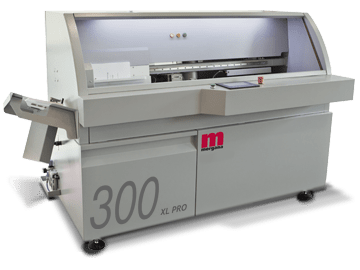
Morgana has launched a new PUR binder, the DigiBook 300 XL Pro, which adds landscape A3 capabilities to the range. Morgana equipment is sold through Print & Pack in Australia. Morgan...
January 18 2018
Morgana has launched a new PUR binder, the DigiBook 300 XL Pro, which adds landscape A3 capabilities to the range. Morgana equipment is sold through Print & Pack in Australia.
Morgana says the DigiBook 300 XL Pro is suited to traditional and digital printers who require short runs of PUR perfect bound books to a professional standard. It only requires single phase power, rather than three phase.
The DigiBook 300 XL Pro binder has an increased input cover size of 450×1,000mm, compared with the 350x700mm maximum format of its predecessor, the DigiBook 300. It can now produce landscape A3 jobs, and produce up to 300 books per hour.
Ray Hillhouse, vice president offline business, Morgana, “We were getting requests for larger books in some markets. For example, in Asia where the photobook market is huge, they were pushing for a larger size.
“Perhaps the most significant change is the book format. Several machines of the previous specification were sold with special extended cover kits to allow for the production of books larger than A4 size. We also had a number of requests for landscape A3 or 11x17in finished size books.”
“These machines are equipped with a patented closed gluing system where the spine and side gluing is applied by a slot applicator for the utmost binding quality and accuracy.
“It is easy to use, even by non-specialised personnel, via a touch screen panel with icon graphics that allow the programming of all precision operations in just a few seconds, including startup and shutdown.
“There are a thousand alphanumeric memories available, which enable repeat jobs to be saved for later recall, thus providing totally automatic setup in a few seconds.”
“The DigiBook 300 XL Pro binding machine uses a new and innovative system which is covered by no less than seven international patents,” says the company.
Along with the base machine, the 300XLPro is available with two additional options – a gauze station for the production of book blocks ready for case binding, and a 78-litre capacity paper chip extractor that allows for longer, uninterrupted runs.
According to Hillhouse PUR provides a stronger bind than hotmelt glues, can be used on a wider range of substrates and is more resistant to the effects of temperature and humidity.
Heidelberger Druckmaschinen AG (Heidelberg) announced that international packaging manufacturer Multi Packaging Solutions (MPS) becomes the first pilot user...
December 13 2017
Heidelberger Druckmaschinen AG (Heidelberg) announced that international packaging manufacturer Multi Packaging Solutions (MPS) becomes the first pilot user of a Primefire 106.
The Primefire 106 was first introduced at drupa 2016, and is the first industrial digital printing system in B1 format, from Heidelberg powered by Fujifilm Inkjet Technology.
The first pilot phase started back in January in cooperation with the MPS’s German manufacturing facility in Obersulm. US-based MPS specialises in packaging solutions for beauty and personal care, consumer and pharmaceutical brands and employs over 9,000 people in 14 countries. The company is planning a major expansion of its digital packaging printing arm in order to offer customers significant added value at the point of sale.
“Our customers include many well-known brand companies from industries like consumer and cosmetics. Fast, creative changes to the brand and product appearance are crucial here today to sales success. That’s why we offer these customers high-quality, flexible, and variable or personalized packaging solutions that will enable them to tap into additional business potential and set themselves apart from their competition. For this we need a reliable, industrial digital printing press like the Heidelberg Primefire 106 that can be integrated into our existing workflow,” explained Steffen Schnizer, managing director and global head of beauty and personal care sales at MPS in Obersulm.
System reliability and Heidelberg service pledge key factors in the investment decision
The image quality, reliability and rapid development of the technology following the product premiere at drupa 2016, and the company’s long years of positive experience of working with Heidelberg in the area of offset printing were key factors in MPS’s investment decision.
“Our business model is based on zero tolerance of error, quality, availability, and on-time delivery. We have many years of experience with Heidelberg as a reliable partner in the area of offset technology. Their quality and service pledge are outstanding. As such we’re confident that Heidelberg digital technologies are also the right choice for us, and we look forward to being involved in the market launch of the Primefire 106 as an early adopter,” said Götz Schümann, managing director of MPS in Obersulm.
Based on the leading Fujifilm Inkjet Technology from the co-development partner Fujifilm and the proven Heidelberg Peak Performance platform, the newly designed system is providing dependable offset-like quality production with the benefits of digital printing.
Rainer Hundsdörfer, CEO, Heidelberg, says, “Heidelberg will be setting new standards when it comes to technologies of the future, digitisation, and efficiency. The necessary cultural shift has only just begun.”
Multi Packaging Solutions produces high-end packaging for consumer branded products in the premium and luxury market space, and the technical requirements for the machines they use are correspondingly high. These prerequisites offer Heidelberg the perfect platform to be able to extensively test and enhance the new machine in real-life operation.
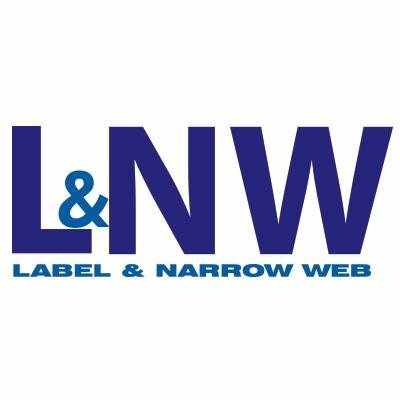
Click on this link below, for a good article from Label & Narrow Web about using digital print technology to diversify into non-label markets.
December 12 2017
Click on this link below, for a good article from Label & Narrow Web about using digital print technology to diversify into non-label markets.
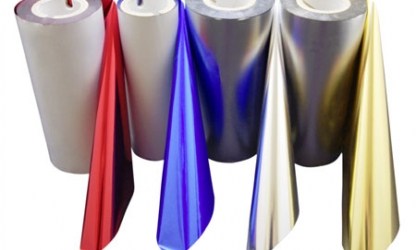
Primera Technology, a manufacturer of specialty printers, has announced its new FX500e Foil Imprinting System. FX500e is Primera’s new and improved foil imprint...
October 25 2017
Primera Technology, a manufacturer of specialty printers, has announced its new FX500e Foil Imprinting System. FX500e is Primera’s new and improved foil imprinter, adding brilliant metallic highlights to pre-printed or blank labels.
It’s a suitable accessory to Primera’s LX- and CX-Series color label printers and other laser- or inkjet-based label printers. As the imprinting process is digital, virtually any design elements can be added to the label including borders, fonts, graphics and backgrounds. Metallic foils enhance product labels because a message of luxury and elegance is conveyed that emphasizes the quality and value of each product.
Metallic foils in gold, silver, blue and red are available, as well as various spot colors and clear foil. When printed onto pre-printed labels, clear foil not only adds a professional, glossy finish but also makes labels virtually waterproof and UV resistant, allowing longer exposure to natural and artificial light sources. Additionally, the clear film adds a high degree of resistance to chemicals, cleaning solutions and other harsh environmental factors.
Fast print speeds and a low purchasing price allow users to quickly produce shiny labels on-demand in the amount that is actually needed, in a cost-efficient way. FX500e costs less than the foil imprinter it replaced, which was called FX400e. The MSRP of Primera’s FX500e is € 499 while the FX400e was priced at € 599.
Additional features include:
The FX500e is easy to set up and operate. Printer drivers are included for Windows XP/7/10 along with BarTender Ultralite and NiceLabel Free 2017 Primera Edition Software (both for Windows), four color ribbon starter rolls and an external supply adapter for 25mm or 76mm (1″/3″) roll cores, holding larger input rolls of up to 216mm (8.5″) outer diameter.
Primera Europe continues to offer 24 months warranty (the standard 12 months, plus an additional 12 months for free upon product registration on its website) for all European units.
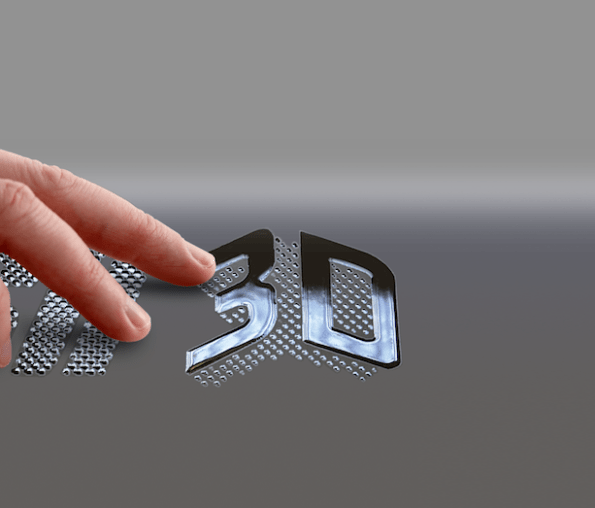
Digital embellishment capabilities can open the door to printed electronics and custom content. Most importantly, it can help create differentiation....
October 22 2017
Digital embellishment capabilities can open the door to printed electronics and custom content. Most importantly, it can help create differentiation.
The following article was originally published by Printing Impressions. To read more of their content, subscribe to their newsletter, Today on PIWorld.
With the help of digital embellishments, print is “poised for a comeback as an engine of growth,” contends Jack Noonan, marketing coordinator for MGI USA. Although digital embellishments are still a relatively new area of growth for commercial printers, there is a definite potential for new job and profit expansion.
One of the key trends in digital embellishments is the increase in research and development dedicated to printed electronics.
The most common forms of printed electronics are Remote Frequency Identification (RFID) and Near Field Communication (NFC) tags, which are commonly used in smart packaging. Noonan explains that they work as antennae for transactional encounters, data transfers or as the informational link between a printed piece and digital communications. An advantage of this technology is that it can be used on a variety of substrates, including paper, synthetics and plastics.
Organic Light Emitting Diodes (OLED) is another form of printed electronics that, as Noonan describes, uses “organic materials that are deposited as micro or Nano particles used in a custom-designed way to light up flexible display substrates.” The technology can be used in applications to create a source of light or provide internet connectivity. For example, OLED can be used to create illuminated flexible displays or interactive labels and packaging.
Another printed electronic solution, Quantum Direct Development (QDOT), has “subatomic energy properties” making it similar to an OLED application, according to Noonan. The technology utilizes the chemical properties of intelligent ink to generate energy that is converted into light or heat.
A more advanced printed electronics application, Organic Photovoltaic (OPV) technology is ideal for the production of solar cells using printable energy circuits.
Looking at the future of the printing industry, Noonan believes that this aspect of digital embellishments will be the future of print, from a business standpoint. The technology offers new job volumes and profit opportunities.
“The application base will be growing exponentially every year that goes by because we’re heading into the Internet of Things and integrated digital connectivity,” he says. “Not only are computers, satellites and cellphones connected but, in fact, everyday objects and engineered manufactured materials can be connected. It’s going to be a very dynamic and vibrant world of three dimensionality in terms of information and communication.”
Digital embellishments play a key role in the evolving omnichannel world of print and digital communications. However, it’s crucial to utilize customer data to reap the full benefits of digital finishing technology. Noonan explains that embellishments — such as 3D digital textures, 2D spot UV and variable embossed foil — can be used to personalize direct mail, which helps to build customer relationships. For example, he says if a printer were to analyze customer data and find that a consumer prefers a specific type of product, that product could be added to a piece of direct mail and embossed to emphasize the personalization.
Noonan points specifically to variable data hologram technology as a solution for unique versioning and security measures with personalized images and text. He explains that by using MGI Meteor Unlimited Colors Press Series technology, for example, printers can create customizable holograms more cost-effectively than by traditional methods. According to Noonan, the technology is highly complementary to digital enhancement applications, and can serve as a way for commercial printers to secure more business with added value capabilities.
“The future of print is a blend of traditional ink and paper with digital connectivity because we now live in an electronic world of information,” he says.
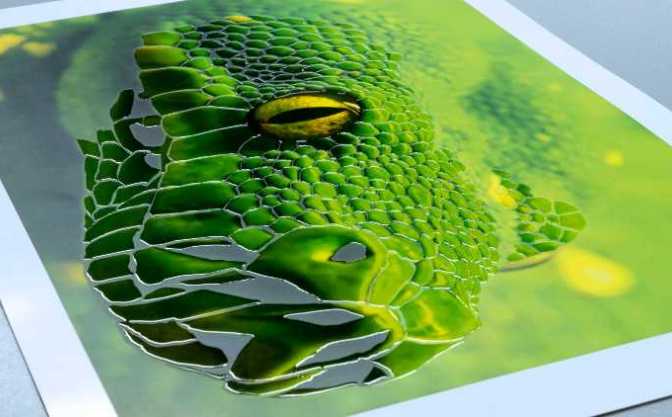
Konica Minolta has enhanced its new Industrial Printing product portfolio with the launch of the MGI JETvarnish 3D Evolution.
October 19 2017
Konica Minolta has enhanced its new Industrial Printing product portfolio with the launch of the MGI JETvarnish 3D Evolution.
The JETvarnish 3D Evolution, developed and manufactured by Konica Minolta’s strategic partner MGI, is available in three sizes from B2 to B1. It delivers high volume productivity with up to 4,065 B2 size sheets per hour, offers remarkable registration and the ability to create brilliant and highly profitable 2D and 3D effects with up to 200 micron in a single pass.
It applies spot UV coating as a top layer to make prints more vivid, tactile and exclusive. The varnish adds a creative touch to a wide range of applications, including luxury packaging, book covers, business cards or greeting cards, brochures, flyers, posters, magazines, photo books, and many more. This makes the JV3D Evolution an interesting add-on product for more or less any print provider operating toner, offset or inkjet print systems.
With the JETvarnish 3D Evolution it is easy to spot coat digital and offset prints, highlight defined areas, or add tactile 3D effects – all of which create attractive print products that are more vivid and tactile. When combined with inline hot foiling module additional glamorous effects are possible.
Charles Lissenburg, General Manager of Konica Minolta Europe’s Professional Printing Division, said: “The JV3D Evolution is used to add value to existing print jobs and make them more spectacular. The device is the ideal digital solution for digital and offset print providers, turns printed jobs into remarkable and appealing print products that will immediately catch the attention of the end customer and provides an added value to the print product.”
German print provider druckpartner Druck- und Medienhaus GmbH is the first operation to invest in the high-end B1 spot UV varnishing and foiling device. It was founded in 1975 as a book and offset printer. Over the years, the award-winning company developed itself to a full-service provider with 120 employees, serving well-known customers from industry and advertising.
From the outset, its formula for success has been to think one step ahead and to offer outstanding services. As a result, druckpartner focuses on innovative technology and extraordinary ideas. It chose Konica Minolta’s JV3D Evolution to add value to existing print jobs and differentiate its services. And just six months after its installation at the druckpartner premises, the long-time Konica Minolta customer was able to seize new business opportunities and increase its services and offerings. Customers are particularly happy to be provided with truly new printing and embellishment options. In addition to UV-spot-varnishing, for example, druckpartner can now offer hot-film treatment – without the need to involve a third-party service provider. Such an embellishment was previously not on offer as the handling cost would have been too high.
By simplifying the production process, introducing the new JV3D Evolution has also led to significantly faster production speeds. Being able to produce in-house is particularly time saving, as intermediate logistics with external printers become unnecessary. The same goes for technical coordination with another supplier: Projects can be managed and handled on site, written briefings or even print dummies for third parties become obsolete. The accounting department is benefiting as well, as it is relieved of having to negotiate the necessary supplier contracts or manage invoices.
“We were able to secure several projects particularly thanks to the embellishment options we are now able to offer. This really set us apart from our competitors – in a situation where otherwise the deal would have gone to the cheapest competitor. The JV3D is really helping us create a USP, broaden our offer base and create products that really trigger customers’ emotions. This decreases price sensitivity by creating additional value,” Klaus Schotte, registered manager at druckpartner, explained.